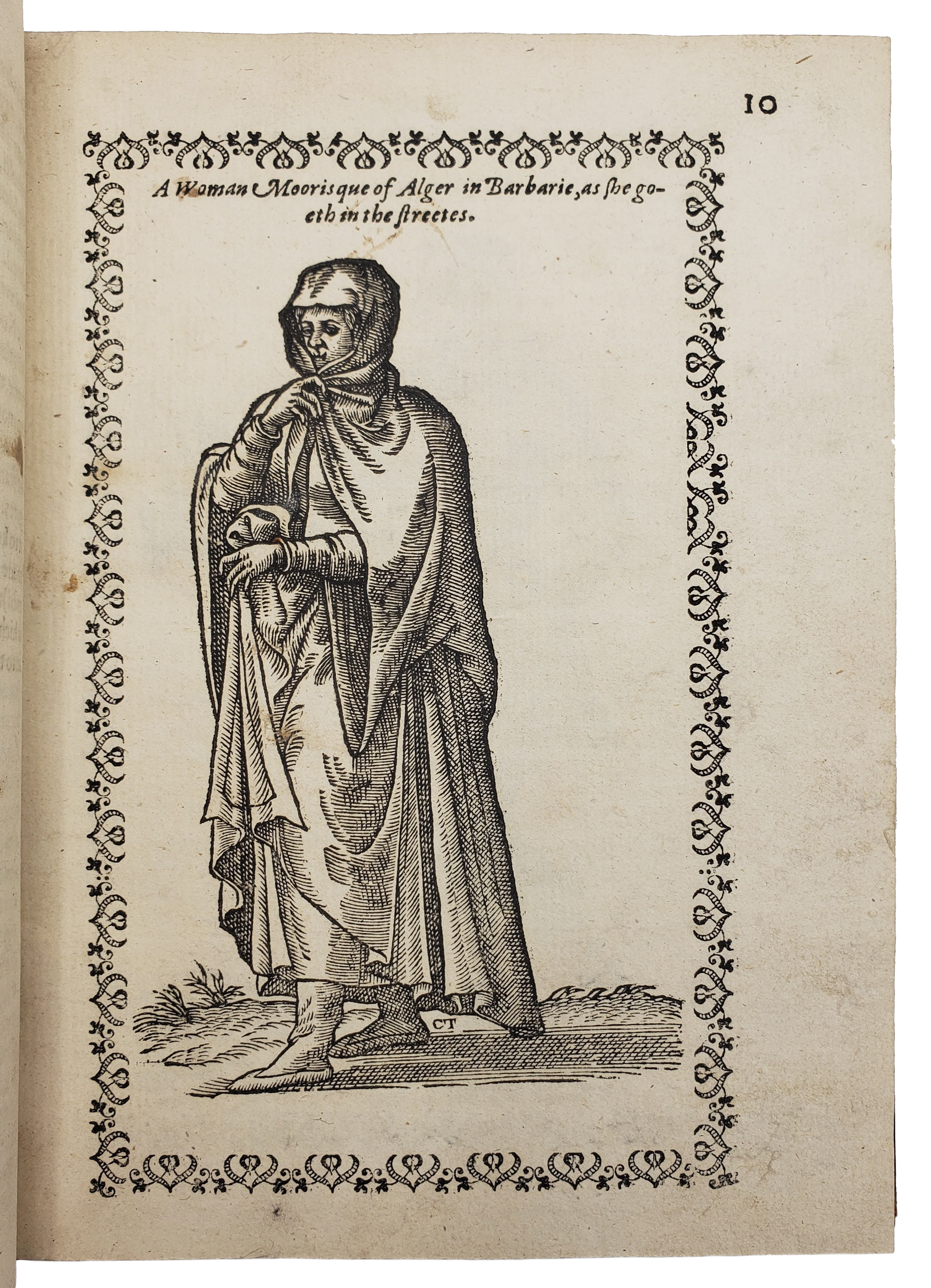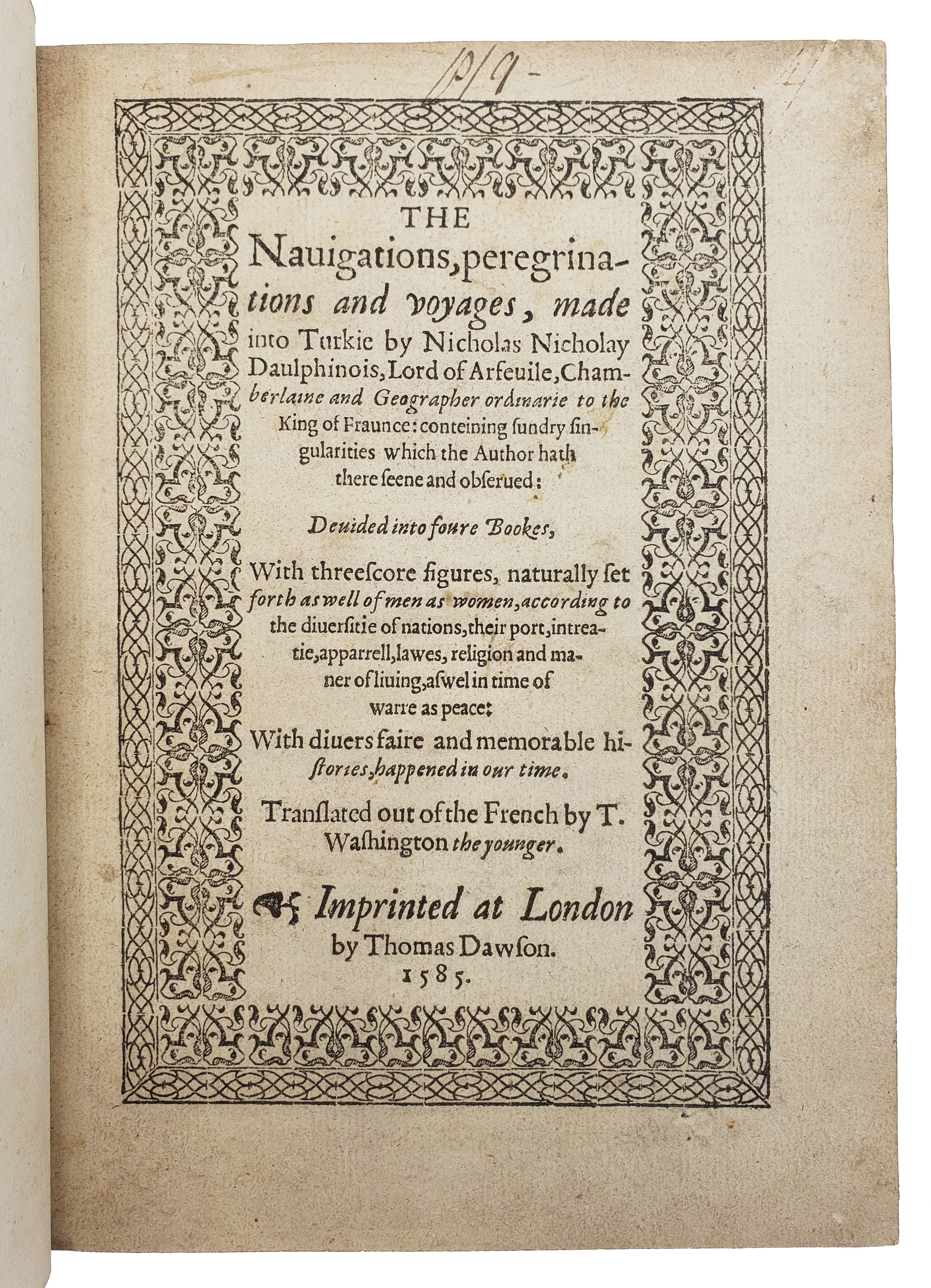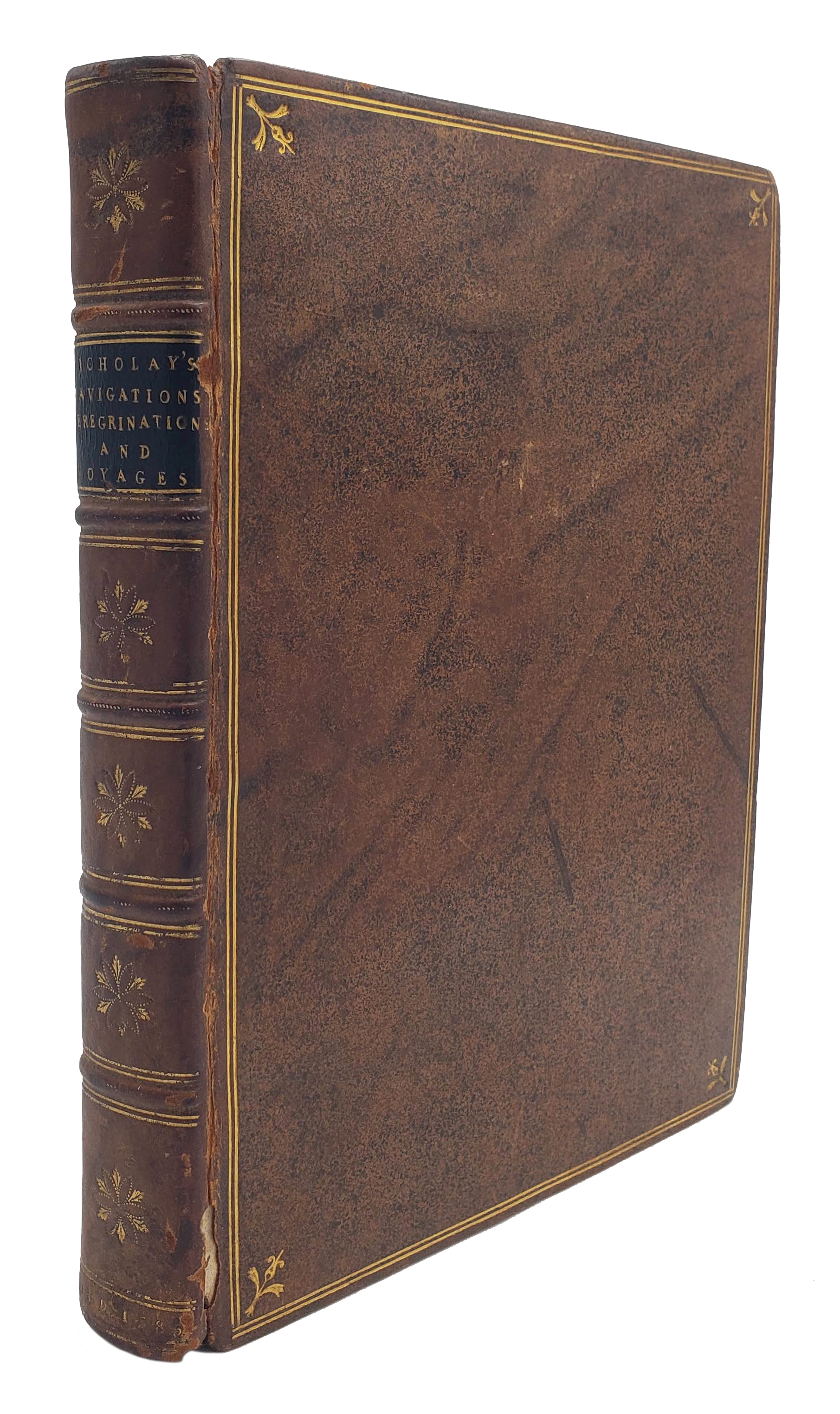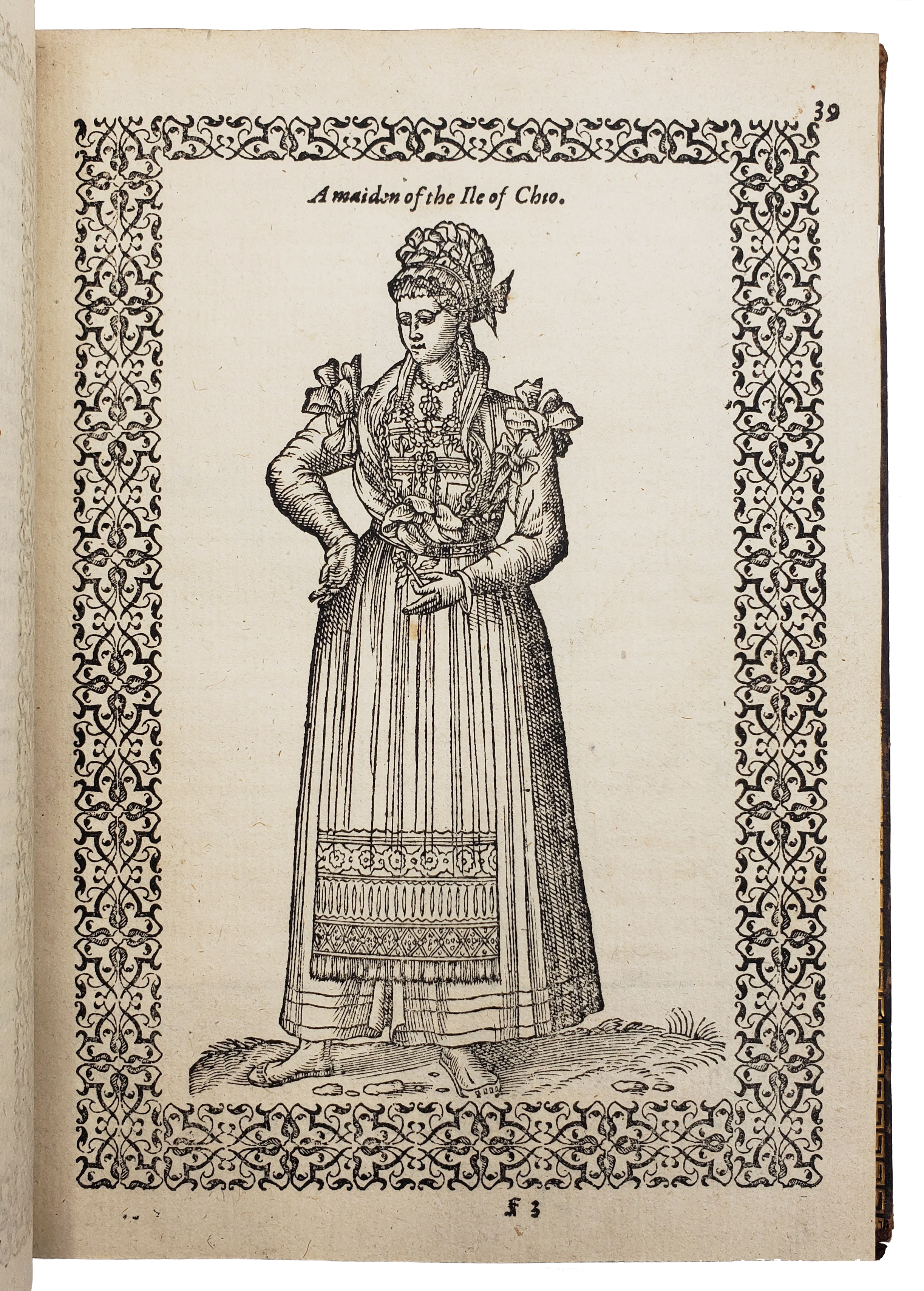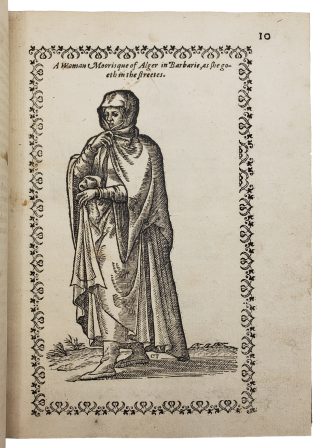NICOLAY, Nicolas de
COSTUME AND CUSTOMS OF THE LEVANT
The Navigations, peregrinations and voyages, made into Turkie.
London, Thomas Dawson [for John Stell], 1585.£25,000.00
FIRST EDITION thus. 4to. ll. (iv) 161 (v). Roman letter. T-p with typographical border. Woodcut initials, typographical headpiece. Sixty full-page woodcut illustrations depicting Turkish and Greek costume within typographical borders, generally very good, strong impressions. C18th sprinkled calf, gilt, spine gilt in panels with morocco label, lightly marked, slight loss from joints at foot of spine, corners bumped, marbled endpapers. Fox Pointe library bookplate. Margin of t-p with contemp. price note, V3v with early autograph to lower margin, illegible. S6 with lateral tear, repaired without loss, one or two ll. with paper flaws at edges, not affecting text, tiny rust hole to F5 affecting one letter. Light spot to a couple of woodcuts, t-p slightly dusty, one or two woodcut borders slightly trimmed at edge, a very good, clean copy.
First edition in English of the French ambassador Nicolas de Nicolay’s account of his travels in the Ottoman Empire, richly illustrated with woodcut depictions of Turkish and Greek costume, first published in French (with engravings) in 1567. The dedicatory letter from John Stell, who paid for the work, is addressed to Sir Henry and Sir Philip Sidney.
Nicolas de Nicolay was attached to the 1551 French embassy of Gabriel de Luetz to the court of Suleiman I, on which he acted unofficially as a geographical surveyor but also likely as a spy; the French and Ottomans had been allied since the reign of Francis I. Sailing via the Balearic Islands to Algeria, the embassy quickly ran into trouble: several Christian slaves escaped onto the French galleys; their Algerian owners, incensed, briefly captured Nicolay as collateral but soon released him. Relationships deteriorated and the Algerian artillery fired at the French fleet, which only escaped after payment of a large bribe. Nicolay justifies the slaves on account of their miserable condition; there is a woodcut of a nude Moorish slave in chains. Passing up the coast, Nicolay describes entering a fissure in a rock, where he and his companions encounter a huge number of ‘strange mice’ (presumably bats) and are forced to retreat, ‘for feare they should pisse on our heads (their pisse being venomous).’ The French ambassador is persuaded by the Knights of Malta to go to Tripoli, which the Ottomans under Sinan Pasha were besieging, to attempt to persuade him to stand down. Nicolay describes the siege works and the grand bazaar where captured Christians are sold as slaves, before witnessing the surrender of the city to the Ottomans. Sailing up through the Greek islands and via Gallipoli they arrive at Constantinople.
The narrative is then given over to Ottoman customs: Suleiman’s court and its seraglio (prostitution in its various forms is a recurring interest for Nicolay); the religious sects of the Turks, including hermits, the violent dervishes, ‘Mahometans,’ etc; the Islamic religion and laws, including descriptions of the pilgrimage to Mecca and the different sorts of pilgrims; the Ottoman army and the janissaries; Turkish baths; wrestling; food and the recreational use of opium; the status of Greeks and Jews, etc. Nicholay describes the antiquities of Constantinople, archaeological remains being of interest throughout the voyage. There is a brief account of the 1509 Great Earthquake, Nicolay claiming that with the subsequent tsunami it killed 13,000 people ‘on a great heape,’ as well as of a fire that destroyed a library with 120,000 volumes and a ‘dragon’ 120 feet long, on which the texts of Homer’s Iliad and Odyssey were written in gold. There follow descriptions of the customs of Persians, Arabians, Armenians, Thracians, Ragusans and Greeks; in seemingly every instance Nicolay’s account is illustrated with a depiction of the relevant costume, including many of women.
Blackmer cat. 231: ‘much less common than either the French or Italian text editions. The woodcuts illustrating the voyage are among the earliest representations of the inhabitants of Algiers, Tripoli, the Barbary Coast, Turkey, Grece, Persia and Armenia.’
ESTC S113220. Cox, I, p. 202. Not in Lowndes or Colas.

